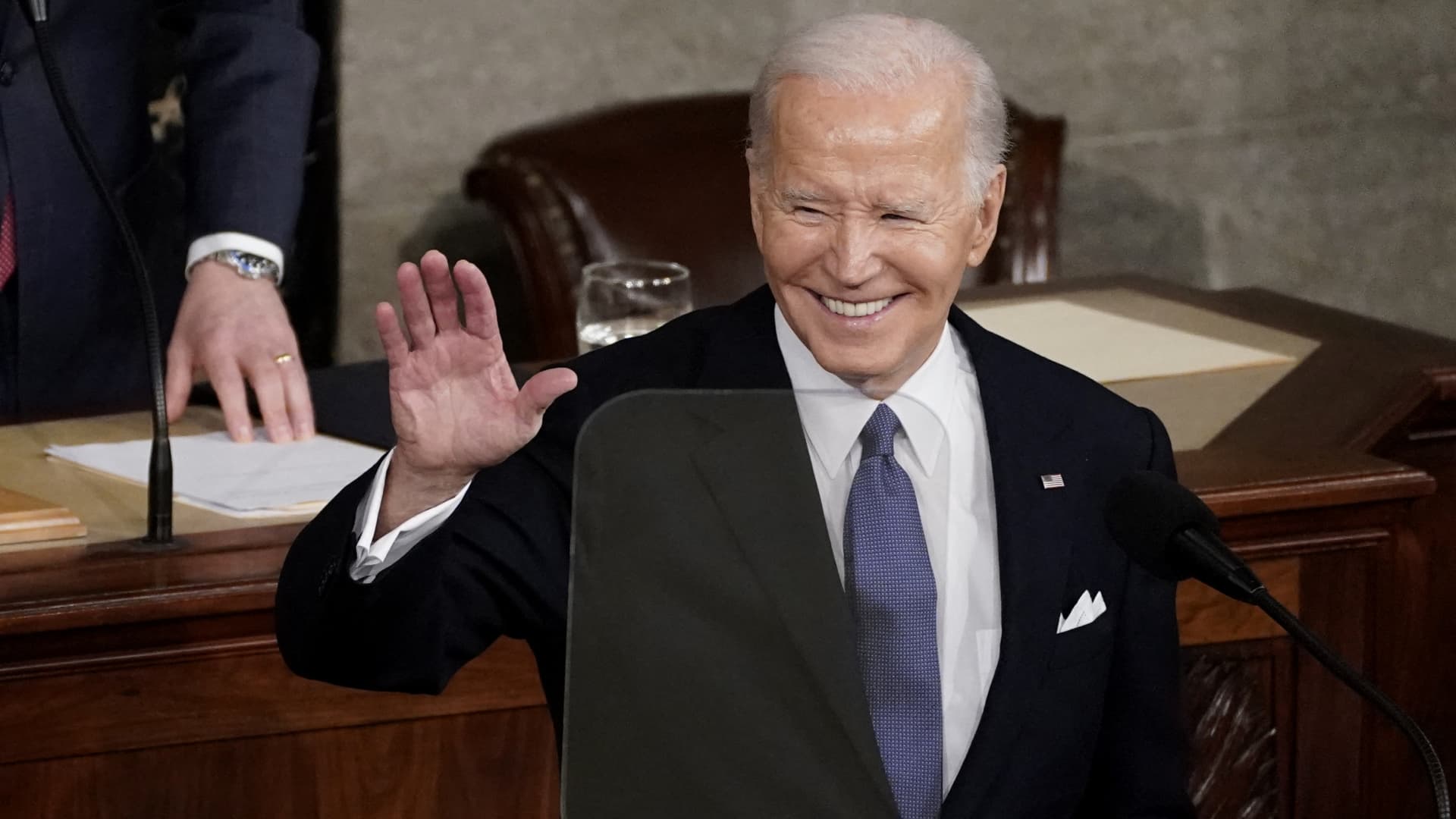In his State of the Union address, President Joe Biden celebrated his administration’s progress in the fight against inflation.
“Wages keep going up and inflation keeps coming down,” Biden said in the annual speech before Congress.
To be sure, inflation has cooled while wages have ticked higher — but households are still struggling to keep up with the increased cost of living.
More from Personal Finance:
Why gas is so expensive in California
Credit card users face ‘consequences’ from falling behind
‘Last mile’ of inflation fight may be more challenging
“Factually, the president is, of course, correct,” said Mark Hamrick, senior economic analyst at Bankrate.com.
However, “it is difficult to tell people that inflation isn’t so bad as it was, given that it has taken about one-fifth of purchasing power away from people,” he said.
The consumer price index — a key inflation barometer — has fallen gradually from a 9.1% pandemic-era peak in June 2022 to 3.1% in January.
But regardless of the latest economic reports, many Americans are living paycheck to paycheck in the face of sky-high prices for everyday items, and most have exhausted their savings and are now leaning on credit cards to make ends meet.
Lower-income families have been particularly hard hit, said Tomas Philipson, a professor of public policy studies at the University of Chicago and former acting chair of the White House Council of Economic Advisers.
Further, reports show wage gains and consumer confidence have only notched recent improvements, he said.
The Biden administration “is like a football team that’s down 10 points at half time but then scores a field goal and claims they are on winning team,” Philipson said.
‘The last mile problem’ in the inflation fight
Then there is the “last mile problem,” said Sung Won Sohn, professor of finance and economics at Loyola Marymount University and chief economist at SS Economics.
While inflation remains above the Federal Reserve’s 2% annual target, getting over the final disinflationary hurdle will be a challenge without curtailing economic growth and risking recession, some economists say.
“Much of the decline in the inflation rate in the past came from the easing of the supply bottlenecks, which are behind us,” Sohn said.
